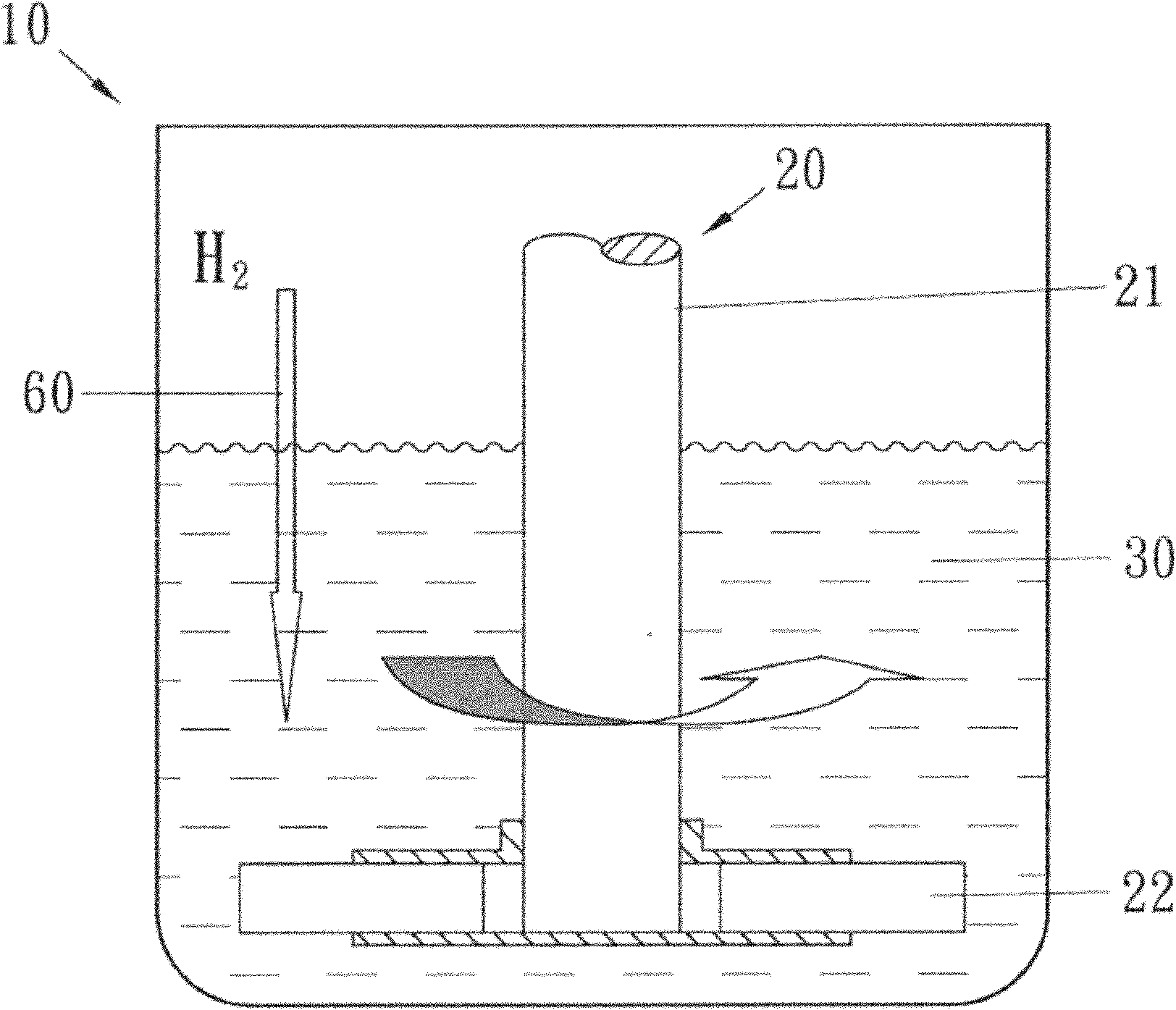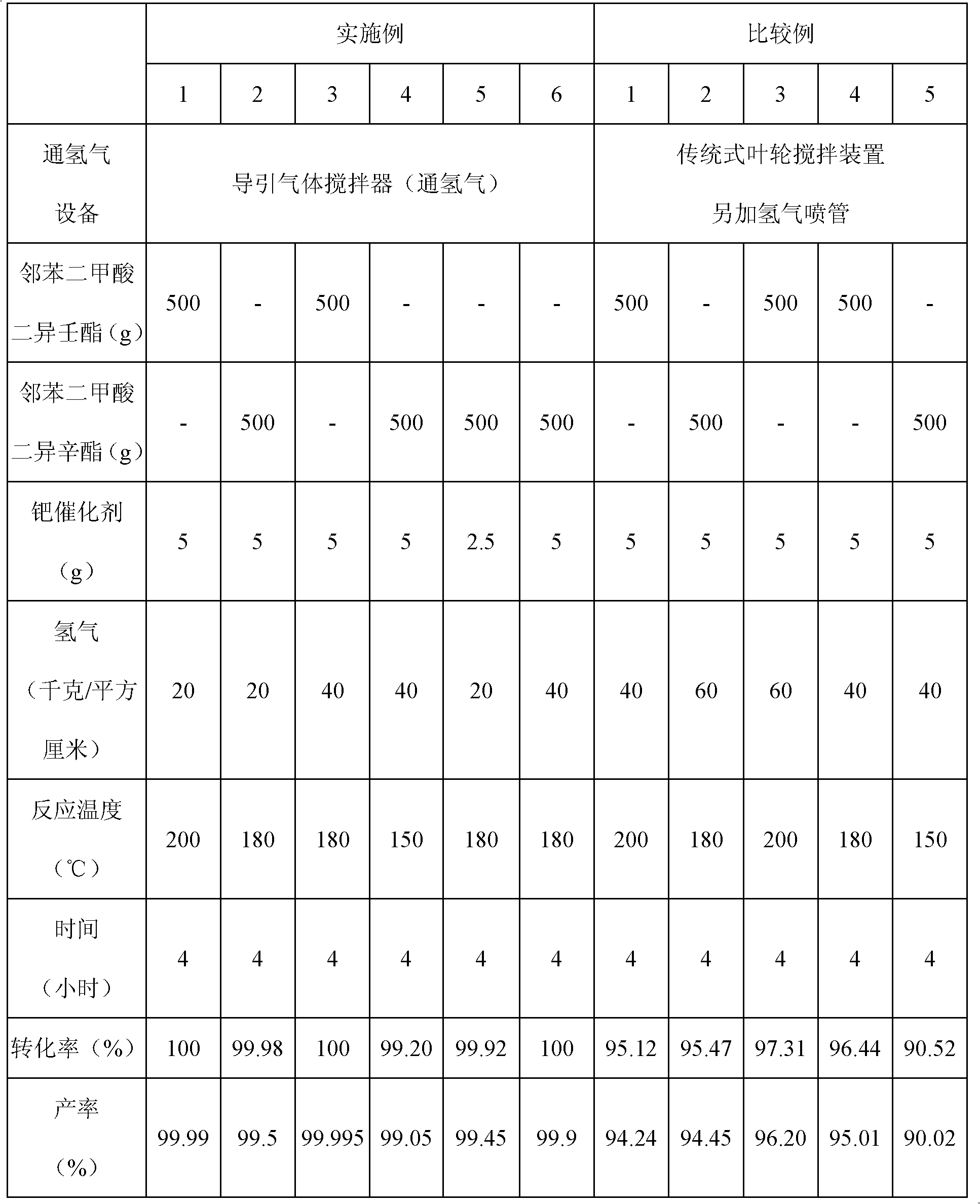Method for preparing cyclohexane carboxylic ester from benzene polycarboxylic ester
A technology of cyclohexane polycarboxylate and benzene polycarboxylate, which is applied in the field of preparation of cyclohexane polycarboxylate, can solve the problems of high construction, operation and maintenance costs, unfavorable industrial production, etc., and reduce the construction cost. and maintenance costs, improve contact efficiency, and reduce operating pressure
- Summary
- Abstract
- Description
- Claims
- Application Information
AI Technical Summary
Problems solved by technology
Method used
Image
Examples
Embodiment 1
[0053] Get 500 grams of diisononyl phthalate (DINP), drop into volume and be 1 liter and be provided with in the pressure-resistant reaction tank of pilot gas agitator and make reaction solution, then add the palladium with active carbon as monomer Catalyst 5 grams, keep constant pressure after adding hydrogen to 20 kilograms / square centimeter. Then start the stirring motor of the reaction tank until the stirring shaft is at 500 revolutions per minute, then increase the temperature to 200° C., and then react at 200° C. for 4 hours. After the reaction is completed, close the hydrogen inlet valve, release the hydrogen in the reaction tank, and cool the reaction liquid to room temperature; after filtering out the catalyst, analyze the composition of the reaction product. The results are shown in Table 1. The conversion rate of diisononyl phthalate was 100%, and the yield of diisononyl phthalate was 99.99%.
Embodiment 2
[0055] Same as Example 1, but using diisooctyl phthalate (DIOP) to replace diisononyl phthalate, the reaction temperature is changed to 180° C., and other conditions are the same. The results are shown in Table 1. The conversion rate of diisooctyl phthalate was 99.98%, and the yield of cyclohexane diisooctyl phthalate was 99.5%.
Embodiment 3
[0057] Same as Example 1, but the hydrogen pressure is changed to 40 kg / cm2, the reaction temperature is changed to 180° C., and other conditions are the same. The results are shown in Table 1. The conversion rate of diisononyl phthalate was 100%, and the yield of diisononyl phthalate was 99.995%.
PUM
 Login to View More
Login to View More Abstract
Description
Claims
Application Information
 Login to View More
Login to View More - R&D
- Intellectual Property
- Life Sciences
- Materials
- Tech Scout
- Unparalleled Data Quality
- Higher Quality Content
- 60% Fewer Hallucinations
Browse by: Latest US Patents, China's latest patents, Technical Efficacy Thesaurus, Application Domain, Technology Topic, Popular Technical Reports.
© 2025 PatSnap. All rights reserved.Legal|Privacy policy|Modern Slavery Act Transparency Statement|Sitemap|About US| Contact US: help@patsnap.com



